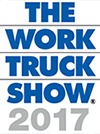
Organizational change comes when companies engage everyone at every level and involve them in the decision-making process.
Rick Weber | Trailer/Body Builders May 5, 2017
If you could boost productivity by 30% or more with team members taking action to ensure customer needs are met, would you be willing to let employees have a say in how things are done?
In “Advantages of Deploying a Lean Workforce: Organizational Transformation,” Brenda J Porter, VP of operations for Vanner Inc, discussed the company’s journey of executing organizational change, making decisions, engaging employees, and creating alignment.
 She said that Vanner, a manufacturing and engineering design company in Ohio, realized 10 years ago that to be effective with continuous improvement, it needed to marry its philosophies and develop a Lean workforce to focus on policies of how to implement Lean.
She said that Vanner, a manufacturing and engineering design company in Ohio, realized 10 years ago that to be effective with continuous improvement, it needed to marry its philosophies and develop a Lean workforce to focus on policies of how to implement Lean.
Once the company became effective at organizational transformation, its sales doubled, the head count was 30% less, the warranty return rate became less than 1%, and inventory was reduced by 50%.
“The only way you can accomplish that is by engaging everyone at every level to take all special skills and talents they have and apply them to the organization,” she said.
She said 80% to 90% of the people in a typical company work hard and want to do the right work and follow company guidelines. You have 5% to 10% on one end who are extremely negative and 5% to 10% on the other end who are extremely positive.
 “Without transparency, management’s focus is usually on the 5% to 10% who have an extremely negative outlook,” she said. “That’s called the squeaky-wheel effect. We think those people represent the body of our organization, and that is not at all true. They have an extremely negative effect on the 80% to 90% who really want to work hard. These negative people cause negative beliefs to happen with those 80% to 90%. That creates feelings and causes emotions that say, ‘We cannot trust management.’
“Without transparency, management’s focus is usually on the 5% to 10% who have an extremely negative outlook,” she said. “That’s called the squeaky-wheel effect. We think those people represent the body of our organization, and that is not at all true. They have an extremely negative effect on the 80% to 90% who really want to work hard. These negative people cause negative beliefs to happen with those 80% to 90%. That creates feelings and causes emotions that say, ‘We cannot trust management.’
The vision/strategic plan needs to ask: What do we want to become? What are our core values? What do we want our relationship to be with our people, customers, stake holders, and supplier partners? What is the strategy to accomplish the vision?
For goals and objectives, ask: What do we want to accomplish near term and long term? What is the plan to get us there? What is the expected outcome?
In terms of performance, ask: Are we meeting the plan? What actions are we taking? How is the work people are doing influencing the outcome?
Porter said upper management support is critical:
• Vision/strategic plan. Provide context and alignment in the organization.
• Champion. Be passionate for organizational change and helping people “be all they can be.”
• Implement a multi-directional communication structure. Create transparency. You say what you do and you do what you say.
• Realize that implementing Lean initiatives and deploying a Lean workforce requires crossing departmental boundaries. Sometimes those walls are the strongest things you find in this world.
“Decision-making is where the action is,” she said. “Decisions made at the point of use are based on measuring and monitoring activity—task management, not the direction. The direction comes from top management with the vision/strategic plan.
“The appropriate decision-making delegated to point of use is where the activity happens. It allows you to respond versus react. You have to have a structure that allows people to accept responsibility and accountability for decisions, because that’s when they grow.”
She said that when the concentration of decision-making is at the top of organization, the top management will keep 40% of those decisions and delegate down 60%. Of that 60%, middle management will keep 30% and delegate down 30% to the staff and first-line supervisors.
“That means that down at the bottom, where the activity happens, there’s no decision-making,” she said. “People are responsible for implementing 60% of those decisions even though they have no ability to make any of the decisions about that activity. So this creates a reactive organization because when something needs to change down where the activity is, it has to go up to where the decision is to be made and all way back down form something to change.
“When you realign that decision-making, upper management keeps 10% and delegates down 90%. Middle management keeps 20% of those decisions and delegates down 70%. Of that 70%, first-line supervisors keep 25% and 45% is delegated down to where the activity is. When that happens, we transform from a reactive organization to a responsive organization.
“An upward spiral creates a sense of accomplishment. People engage because they know they make a difference. When people engage, their focus changes from the job at hand to their roles and goals. They think, ‘My work is important. My role is important. I’m important.’ And organizational transformation happens.”
Experience Power…Experience Vanner!
More Information: info@vanner.com
Follow Us on Twitter: @VannerInc

